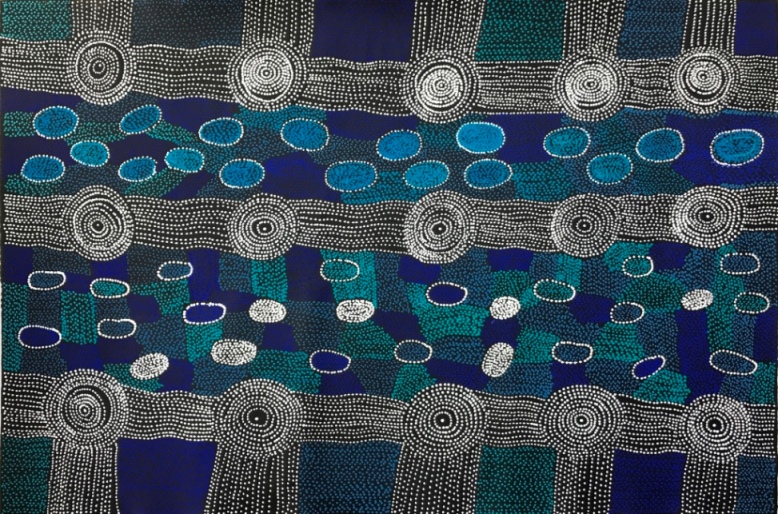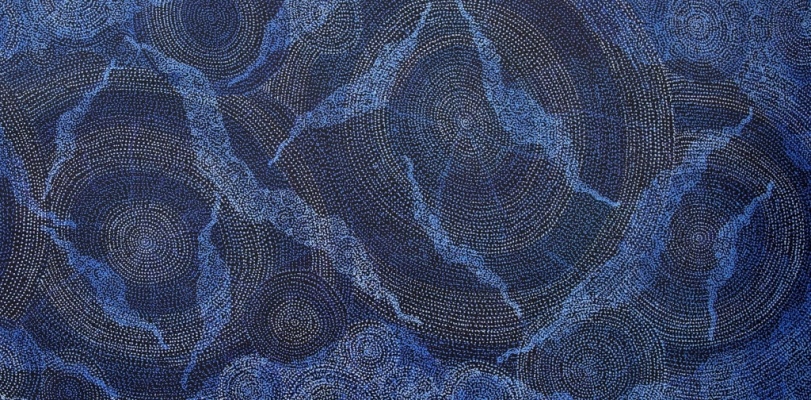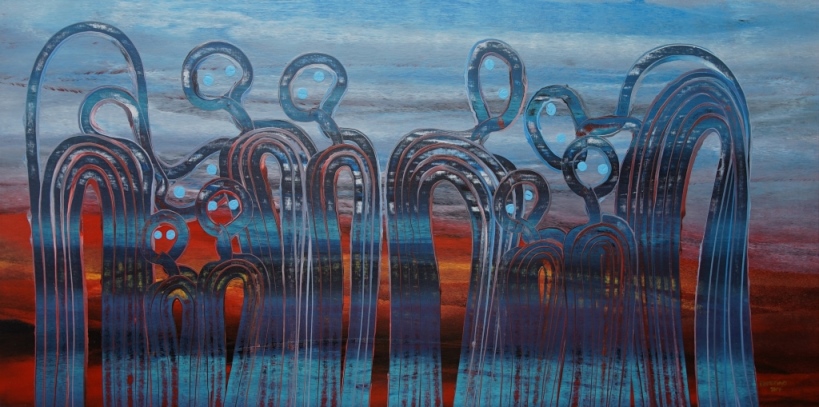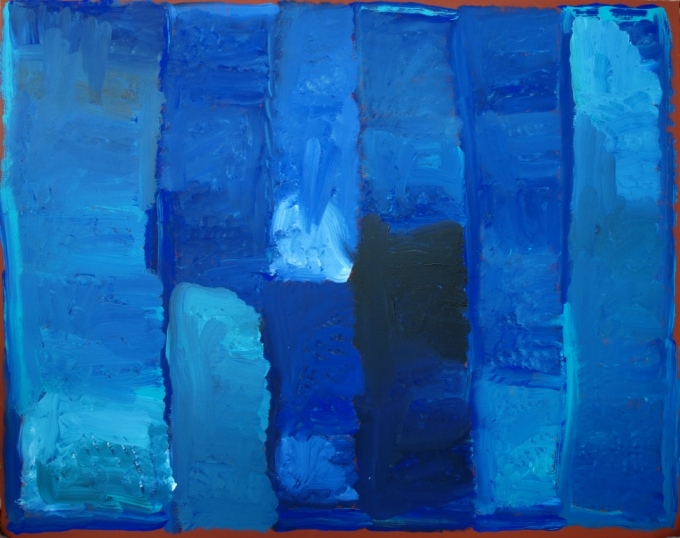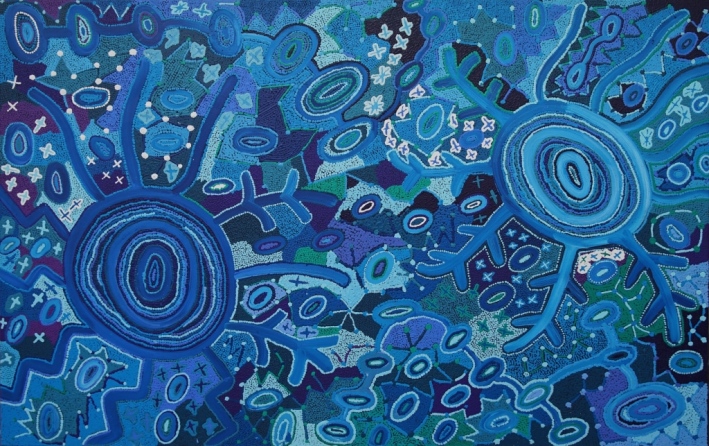Many Stories in Shades of Blue at Japingka Gallery
Blue is a fascinating colour – it seems that it appeals universally as a colour. Having said that, historically it has been an incredibly difficult colour to extract for artists and artisans. All the earth colours we can get from pigments in the ground. However, when it comes to finding the colours seen in water and sky, artists have always struggled to find a way to produce the colour.
Going back to the earliest records, we know the Egyptians made a blue glass using a copper compound, and then ground it down to get tiny blue fragments, or pigment, which they used in their artwork. Lapis lazuli was brought into Europe from early times, an exotic pigment mined in Afghanistan. Yet blue still remained a fairly obscure, expensive and difficult colour for artists to use.
It wasn’t until the 19th century that chemists started to find ways to engineer these ancient blue tones, and the colours we see in nature, by making new chemical compounds. The first colour created was indigo, or prussian blue, and then soon after that, ultramarine. During the 19th century, the availability of blue paint expanded and it became more available to artists. Now it was a lot less expensive, whereas in earlier times it was exclusively available for aristocratic use.
Today, we have cobalt blue, turquoise, ultramarine, pthalo blue and many variations of blue tones available. It creates a whole new psychological range of colours that were not necessarily readily available in earlier times. Because we associate it with water and clear skies, there’s an element of security and harmony wired into our appreciation of the colour blue.
The current exhibition of blue paintings by Aboriginal artists shows the work of 15 artists, who use evocative tones of blue to express different types of Dreaming stories or references to nature. One of these, the night sky paintings of Gabriella Possum Nungurrayi, shows the Seven Sisters Dreaming story, the constellation. She chooses a colour approaching midnight blue, a deep sky colour found after sunset.
Paintings from four sisters – Lanita, Louise, Caroline and Selina Numina – use colour beautifully. They include Dingo Dreaming, Mountain Devil Lizard and Water Dreaming stories. They use contrasting tones of blues against an off-white colour on black background, so that the structure of the Dreaming tracks and waterholes stands out against the background colour.
Sarrita King has produced images Ancestors and Waterholes, as has her sister, Tarisse King, and they are familiar representations of the importance of water. They include the patterns made by water, both on sand and rock and in its form as a running stream. This idea is also picked up by West Australian artist Yondee Shane Hansen. He refers to the patterns made by water when it’s running off rocks, or into ravines, to show the moving formations of water, the way that it structures itself as it moves.
Utopia artists Gloria Petyarre, Abie Loy, Rosemary Petyarre and Dulcie Pwerle Long have included paintings of Bush Medicine Leaves. These show the prized medicine leaves that are collected in bundles by the women and used in traditional health practices in the desert.
Kudditji Kngwarreye is a special figure in Aboriginal art. His abstract paintings refer to his Country, depicting different aspects of the seasons and weather. He has a gorgeous blue painting that moves from blacks and deep cobalt blues through to almost a turquoise colour, and representing his country under the rain, with clouds and the whole transformation of the country when a rainstorm reaches deep into the desert country. Hanging next to that painting is one by Sarrita King representing lightning, showing the night sky with fork lightning, the blue and black intensity of a tropical electrical storm in a night sky.
Women’s ceremonial body painting designs from Central Australia are presented by Betty Mbitjana and Charmaine Pwerle, showing various body markings used by the women in ritual performances. There are two wonderful paintings from Faye Nangala Hudson representing Vaughan Springs Dreaming, expressed in a broad sweep of blue tones with smallest additions of mauves and deep greens. They show the story associated with the Rainbow Serpent, the powerful spirit figure linked to water and survival. These stories represented here are part of the extraordinary interpretation of Aboriginal Dreaming culture, using symbols and colour to draw us into the mood of the narrative.

